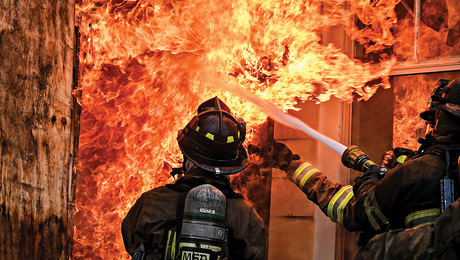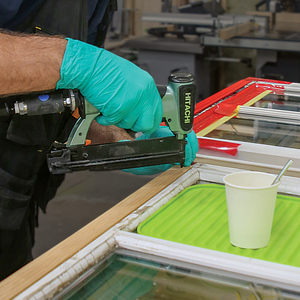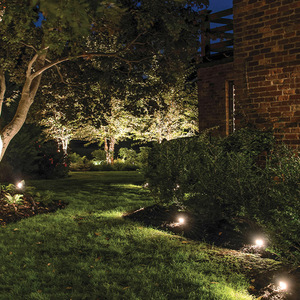Does anyone know of a simple lightning protection system that is easy to install myself or with the help of an electrician. The house is in a safe location but I would like to have it installed just in case. I have received quotes from “lightning protection specialists” but the system is very costly and not that necessary – I’m hoping to find a simplified bolt on system that will provide some protection.
Discussion Forum
Discussion Forum
Up Next
Video Shorts
Featured Story

Smart construction decisions and material choices can significantly improve occupant safety and survival in the event of a fire in the home.
Featured Video
SawStop's Portable Tablesaw is Bigger and Better Than BeforeHighlights
"I have learned so much thanks to the searchable articles on the FHB website. I can confidently say that I expect to be a life-long subscriber." - M.K.
Fine Homebuilding Magazine
- Home Group
- Antique Trader
- Arts & Crafts Homes
- Bank Note Reporter
- Cabin Life
- Cuisine at Home
- Fine Gardening
- Fine Woodworking
- Green Building Advisor
- Garden Gate
- Horticulture
- Keep Craft Alive
- Log Home Living
- Military Trader/Vehicles
- Numismatic News
- Numismaster
- Old Cars Weekly
- Old House Journal
- Period Homes
- Popular Woodworking
- Script
- ShopNotes
- Sports Collectors Digest
- Threads
- Timber Home Living
- Traditional Building
- Woodsmith
- World Coin News
- Writer's Digest


















Replies
tv antenna hook to a couple ground rods
Most old country farm houses used a weather vane for this purpose. You install a metal weather vane and connect it with a heavy cable to a ground rod driven near the house. But if you have any trees around, they serve the same purpose. Look at it this way, how old are you and how many times has lightning struck the place you were living?
It never really made sense to me to stick something on my roof to try to encourage lightning to strike my house. Even if the lightening rod works as designed, I have to think there will still be some collateral damage if only to carpet/furniture I'm on when I soil my pants.
I think of it like walking in the worst neighborhood in your area flashing a wad full of cash and lots of gold bling just because you are carrying a gun. Why invite trouble?
Utility poles are a fine lightning rod alternative. I used to live on a farm, pole about 100' from the house. Lightning hit the pole twice in about a 4 year span. I never had to mow or pull a weed around the pole again. I believe that where lightning strikes,nothing will grow.This is not a fact ,just my observations.I had another spot in the field where nothing would grow, I think it was also hit with a lightning strike.
mike
About anything will do if you have a good ground. Wire layed on the ridge is good, or a rod at each end of the house about 10 ft high (Piece of about any kind of pipe bigger than 1/2" will work)
Biggest trick is to NOT have any bends in the downhouse wire, especially any sharp bends, keep radius above 3 feet if you absolutely need to bend the conductor. .
#6 AWG OK, if any bends smaller that a foot, the magnetic forces can BREAK 4/0 faster than the pulse can fuse #6.
I've considered a flagpole - we have a 60' aluminum pole at my church. Downside is, a 10 x 15 foot flag costs about $225, and it lasts about 8 months. Expensive window dressing, but who wants a naked flagpole ?
I have a 52 foot windmill tower with an 8 foot Aermotor windmill, but as far as I know, it's never been struck by lightning.
Greg
You might want to clarify a bit - are you looking for protection for the building (as in a lightning rod) or protection for electronics inside the building (as in whole-house surge protection)?
Mike Hennessy
Pittsburgh, PA
Everything fits, until you put glue on it.
I'd be pretty careful in accepting advice - "just about anything will do?"
It is my understanding that there are some pretty rigorous requirements for lightning protection - and if you "attract" it you sure as heck want to b sure it is dissipated effectively.
It is my understanding that most current travels along the surface of the conductor, and lightning system grounds are "woven" wires to maximize the surface area.
It seems to me that I heard somewhere that such systems are intended (in part) to "prevent" localized buildup of electrical potential in the protected area by bleeding it away -- BUT I don't actually know that or the source for that idea.
"Ask not what the world needs. Ask what makes you come alive... then go do it. Because what the world needs is people who have come alive."
Howard Thurman
http://rjw-progressive.blogspot.com/
Yeah, there's a lot of disagreement, even among the REAL experts, as to what should and shouldn't be done. This is in part because lightning is a very unpredictable beast.But it is helpful to consider that many, many homes have rooftop antennae, and there's never been any significant evidence that the antennae increase the chance of a damaging strike or increase the damage of strikes that do occur. So likely it's true that "any old thing" will at least not do much harm.One should observe reasonable cautions with the ground wires installed -- keep them external to the structure, keep them away from other wiring, keep them as straight as possible, avoid sharp bends, and use robust connections between wires (eg, split bolts).
As I stood before the gates I realized that I never want to be as certain about anything as were the people who built this place. --Rabbi Sheila Peltz, on her visit to Auschwitz
If you go to ebay there are sellers of old lightning rods and equiptment. Take a look and see what is out there.
Here's some cable
http://cgi.ebay.com/Copper-Braided-Lightning-Rod-cable-Wire-cord-30_W0QQitemZ250435084460QQcmdZViewItemQQptZArchitectural_Garden?hash=item3a4f1820ac&_trksid=p3286.c0.m14&_trkparms=65%3A12%7C66%3A2%7C39%3A1%7C72%3A1205%7C240%3A1318%7C301%3A0%7C293%3A3%7C294%3A50
There is a lot more lightning rod, balls, weathervanes because they are somewhat collectable.
http://cgi.ebay.com/RARE-FRONT-HORSE-LIGHTNING-ROD-WEATHERVANE-ARROW_W0QQitemZ290321215103QQcmdZViewItemQQptZArchitectural_Garden?hash=item43987e2e7f&_trksid=p3286.c0.m14&_trkparms=65%3A12%7C66%3A2%7C39%3A1%7C72%3A1205%7C240%3A1318%7C301%3A0%7C293%3A5%7C294%3A50#ebayphotohosting
Will Rogers